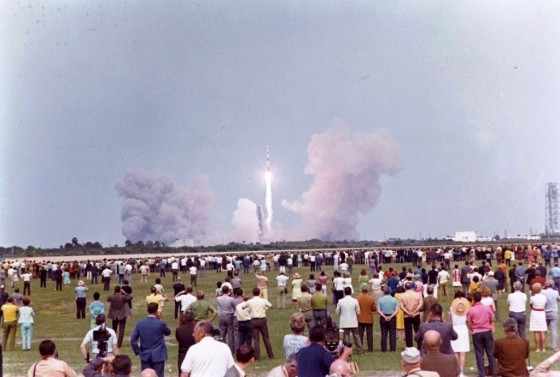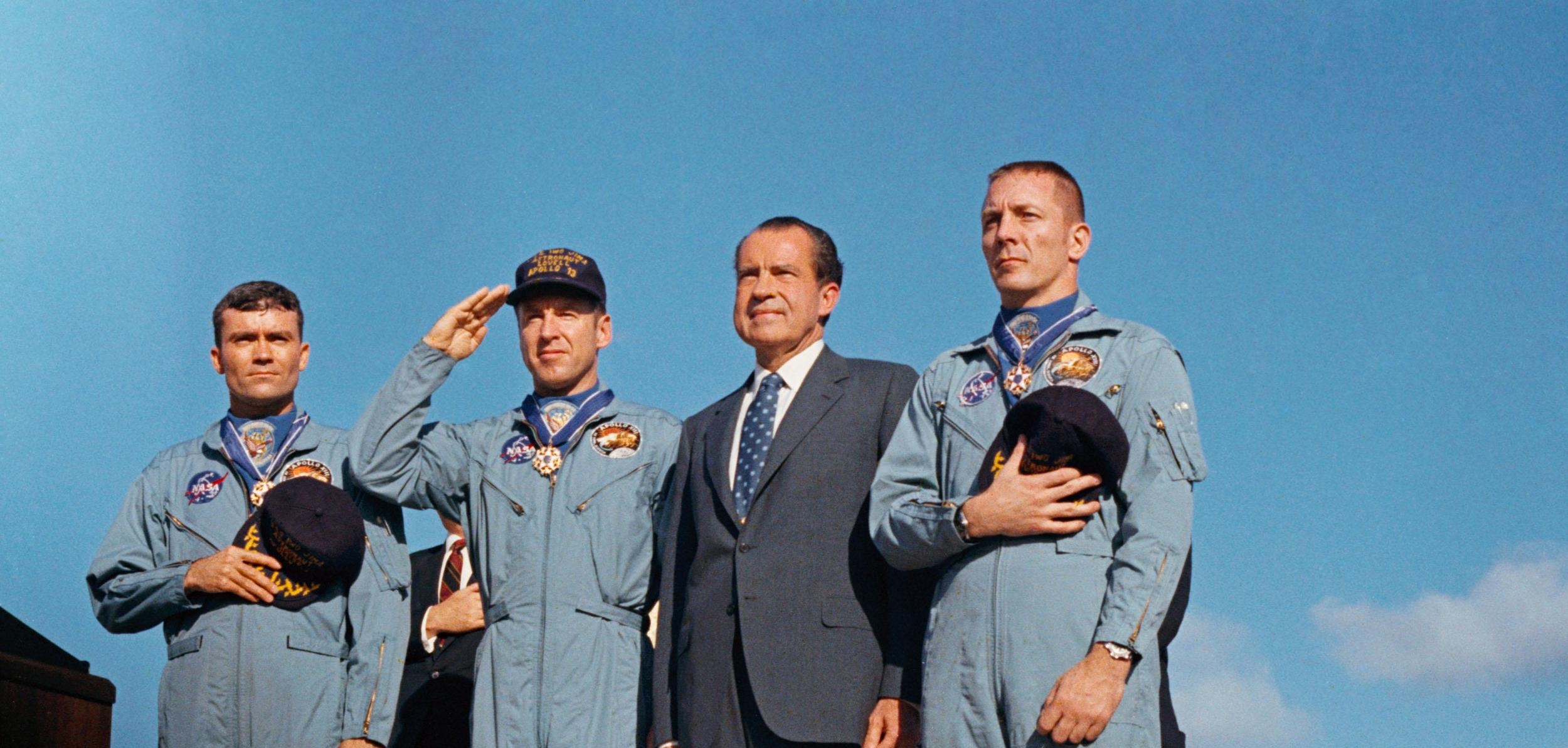
Oct 20, 2016 | News, Space
The Space Race demonstrated that the United States and Soviet Union could partake in peaceful competition and cooperation From Sputnik to the lunar landings, the Space Race represented one of the more electrifying aspects of the Cold War: the United States and the...

Apr 11, 2016 | News, Space
Apollo 13 lifts off from Cape Canaveral, Florida as an audience watches. On April 11, 1970, Apollo 13—manned by Commander James A. Lovell, Command Module pilot John L. Swigert, and Lunar Module pilot Fred W. Haise– launched from the Kennedy Space Center in Cape...
Mar 16, 2015 | News, Space
President Nixon with Apollo 11 astronauts, left to right, Neil Armstrong, Michael Collins, and Buzz Aldrin, through the window of the Mobile Quarantine Facility aboard the USS Hornet. (July 24, 1969) Richard Nixon assumed the office of the presidency at the height of...
Dec 22, 2014 | Foreign Policy, News, Space
President Nixon and Soviet Premier Alexei Kosygin sign the Cooperation in Space Agreement on May 24, 1972 With the end of the Apollo space program in sight two years into his first term, President Nixon knew that his Administration had to rethink the future of space...
Jul 28, 2014 | News, Space, The New Nixon
It appeared that manned space flight was in its golden age during the Nixon presidency, as all but three manned space flights of the Apollo program were completed during President Nixon’s first term. Yet another NASA initiative was launched during RN’s...
Jul 28, 2014 | News, Space, The New Nixon
July 20th was the forty-fifth anniversary of the very first moon landing, but this milestone was only a small part of the extensive success of the Apollo program, most of which was carried out during Richard Nixon’s presidency. The program was proposed by Canadian...




